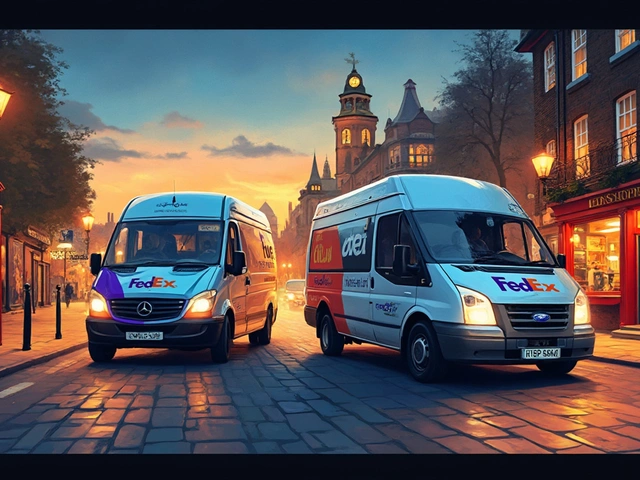Courier Technology: The Tools Powering Faster, Safer Shipments
If you’ve ever waited for a package and wondered why it sometimes arrives early and other times late, the answer is the tech behind the courier. Today’s delivery firms use a mix of software, sensors, and AI to plan routes, monitor parcels, and keep drivers on schedule. Understanding these tools helps you pick the right service and even tighten up your own shipping process.
Smart Routing & Real‑Time Tracking
At the core of modern courier services is dynamic routing. Instead of a static map, algorithms crunch traffic, weather, and delivery windows to create the most efficient path each minute. This means fewer detours, lower fuel costs, and quicker drops. Real‑time tracking plugs into a smartphone app, showing you exactly where a driver is, when they’ll knock on your door, and if anything changes. It’s why you can get live ETA updates on the UPS or FedEx apps.
Tracking isn’t just a courtesy—it’s a safety net. Sensors inside the package can flag temperature spikes for sensitive goods, and geofencing alerts the sender if a parcel leaves the expected region. The data also feeds back to the courier’s warehouse management system (WMS), letting them adjust inventory flow on the fly.
Automation in Pick‑Pack & Last Mile
Before a parcel even hits the road, automation is already at work. Warehouse robots pick items from shelves, sort them by size, and place them on conveyors that automatically label each box. This cuts manual errors and speeds up order fulfillment, especially for e‑commerce sites that process hundreds of orders a day.
On the last mile, some couriers deploy electric cargo bikes or autonomous lockers. The bike can zip through city traffic while the locker lets customers retrieve packages on their schedule, reducing missed deliveries. When you combine these options with AI‑driven demand forecasting, the whole supply chain becomes tighter and cheaper.
All this tech sounds high‑tech, but it trickles down to everyday benefits. You get more accurate delivery windows, lower shipping fees, and fewer “where’s my parcel?” calls. For businesses, it means happier customers and better cash flow because orders move faster.
Curious about which tools matter most for your needs? Look at our recent posts: “What Software Is Used in Supply Chain Management?” breaks down the main platforms, while “Understanding Last Mile Delivery Risks” explains the challenges that tech is solving. If you’re budgeting, “Cheapest Overnight Shipping Rates” shows how automation can lower costs.
When you choose a courier, ask them about their routing engine, tracking precision, and any automation in their fulfillment centers. A service that invests in technology is more likely to keep promises and adapt when demand spikes—like during holidays or big sales.
In short, courier technology isn’t just a buzzword. It’s the engine that makes same‑day, next‑day, and even two‑hour deliveries possible. By staying aware of these tools, you can make smarter shipping choices and keep your own operations running smoother.
June 2, 2025
Evelyn Wescott
0 Comments
Ever wondered how FedEx makes sure your package arrives on time even in the middle of a snowstorm or during the holiday rush? This article breaks down the real software FedEx uses to plan routes, avoid delays, and save fuel. We dig into the tech that makes those purple-and-orange trucks so smart, plus a few wild facts from behind the scenes. You'll also find out how smaller companies can use some of these same tricks. By the end, delivering a package might seem like less of a mystery.




